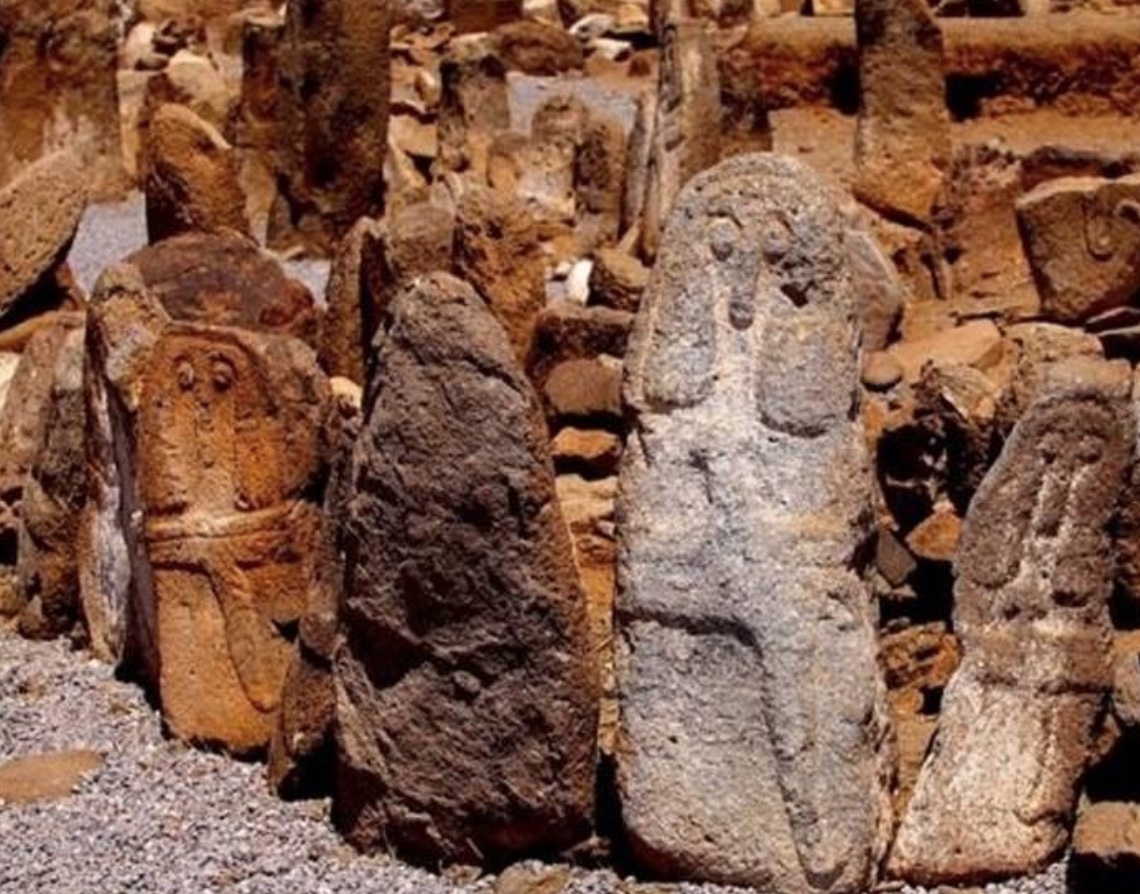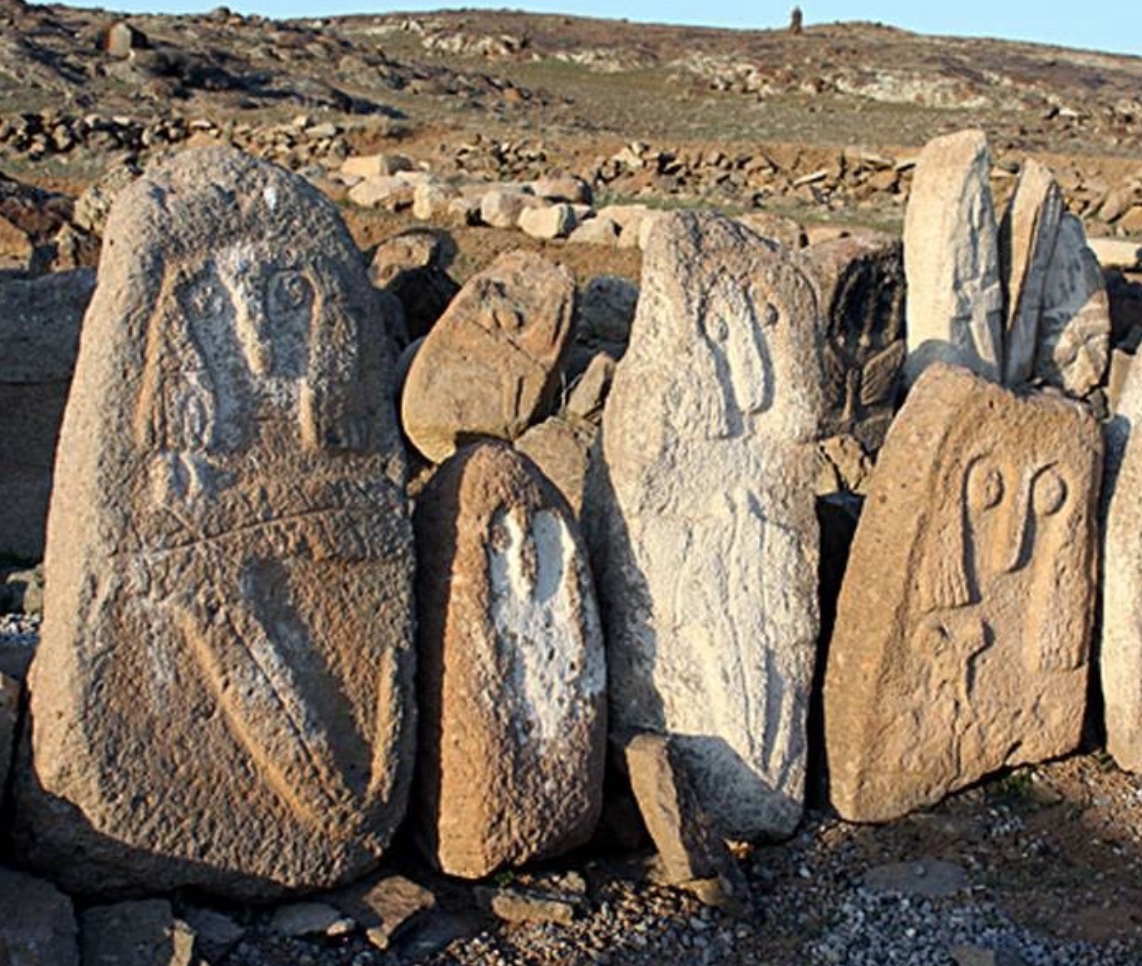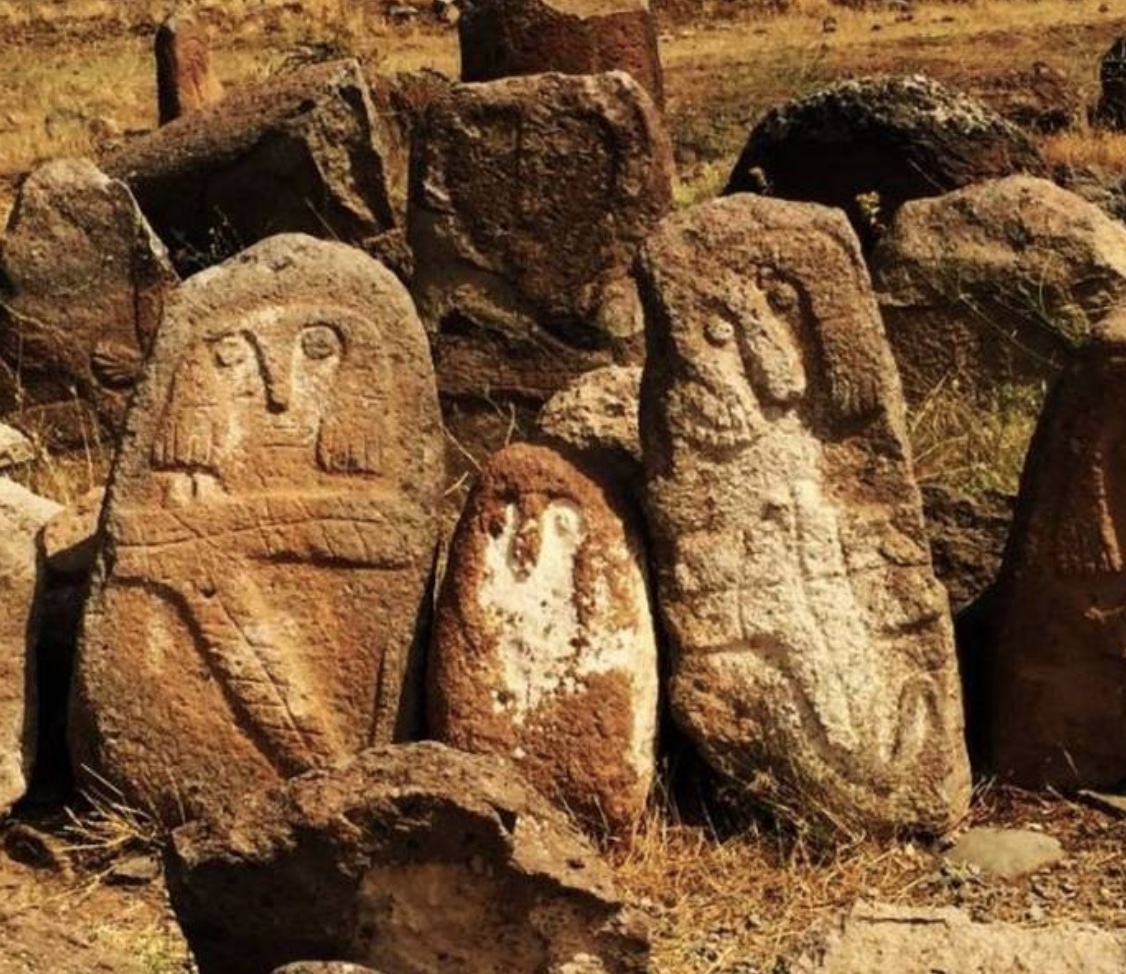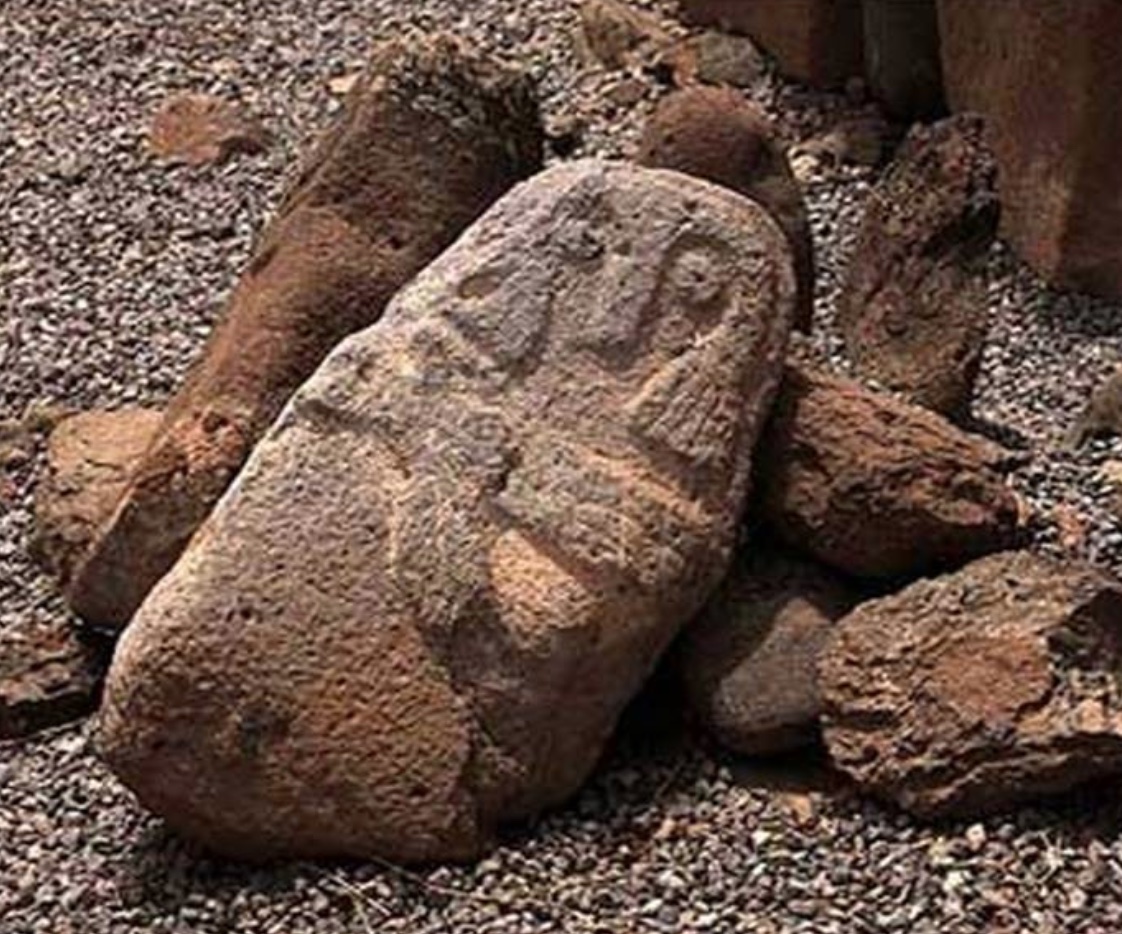Ardabil is known to for its unique nature and mild climate, as well as being host to one of the most intriguing historical sites in Iran’s northwest. More specifically there is a very large prehistoric archaeological zone in Ardabil province.

Tombstones at Yeri (Photo source: Last Second Ir); note that the engraved persons appear to be displayed with short swords or daggers.
This ancient area is known as the city of Yeri, which lies astride the Qarasu River, is located to the northwest of Pirazmian village (just 31 km east of the city of Meshginshahr). Spanning 400 hectares, the Yeri archaeological zone consists of : a temple, a military fortress, and a locale known as Qosha Tappeh. The temple and fortress have been dated to sometime in 1450 BCE with Qosha Tappeh much older to the seventh millennium BCE.

Tombstones at Yeri (Photo source: Last Second Ir).
According to Charles Bernie the history of the majority of the tombs in this area are to be traced to the second and first millennium BCE. Interestingly, Bernie also predicted that this date would be revised to a thousand years earlier (third millennium BCE). However, because he could was unable to specifically identify traces of Bronze Age habitation, he did not insist upon this theory pending further excavations and data. Dr. Nobari’s expedition team were able uncover valuable objects from the tombs December 2003, confirming that the site can be traced to the third millennium BCE. The Nobari team’s finds are now housed in the Khalkhal Archaeological Museum.

Tombstones at Yeri (Photo source: Last Second Ir); note what appear to be long swords engraved with the left and right images.
Some archaeologists estimate the site to be even older at 9,000 years, and believe that the human-shaped chipstones here date back to 7,000 BCE. The surrounding stones feature numerous patterns and motifs. These display different designs and dimensions that have been engraved by regular and precise strikes by hard stones, animal bones and hard metals. Designs impressed upon these rocks include antelopes, humans in various states along with several other unidentified motifs. In the vicinity of this same area, there are also tombstones with uniform drawings of peoples’ faces that have no mouths. The dimensions are as small as 40 centimeters to as large as 2 meters to 40 centimeters – these number approximately one hundred in total. To date 450 graves have been identified by archaeologists so far. There is also that contain archaeological data belonging to different periods which archaeologists have been investigating. Time will certainly tell if Yeri will hopefully be nominated as a UNESCO world heritage site.




